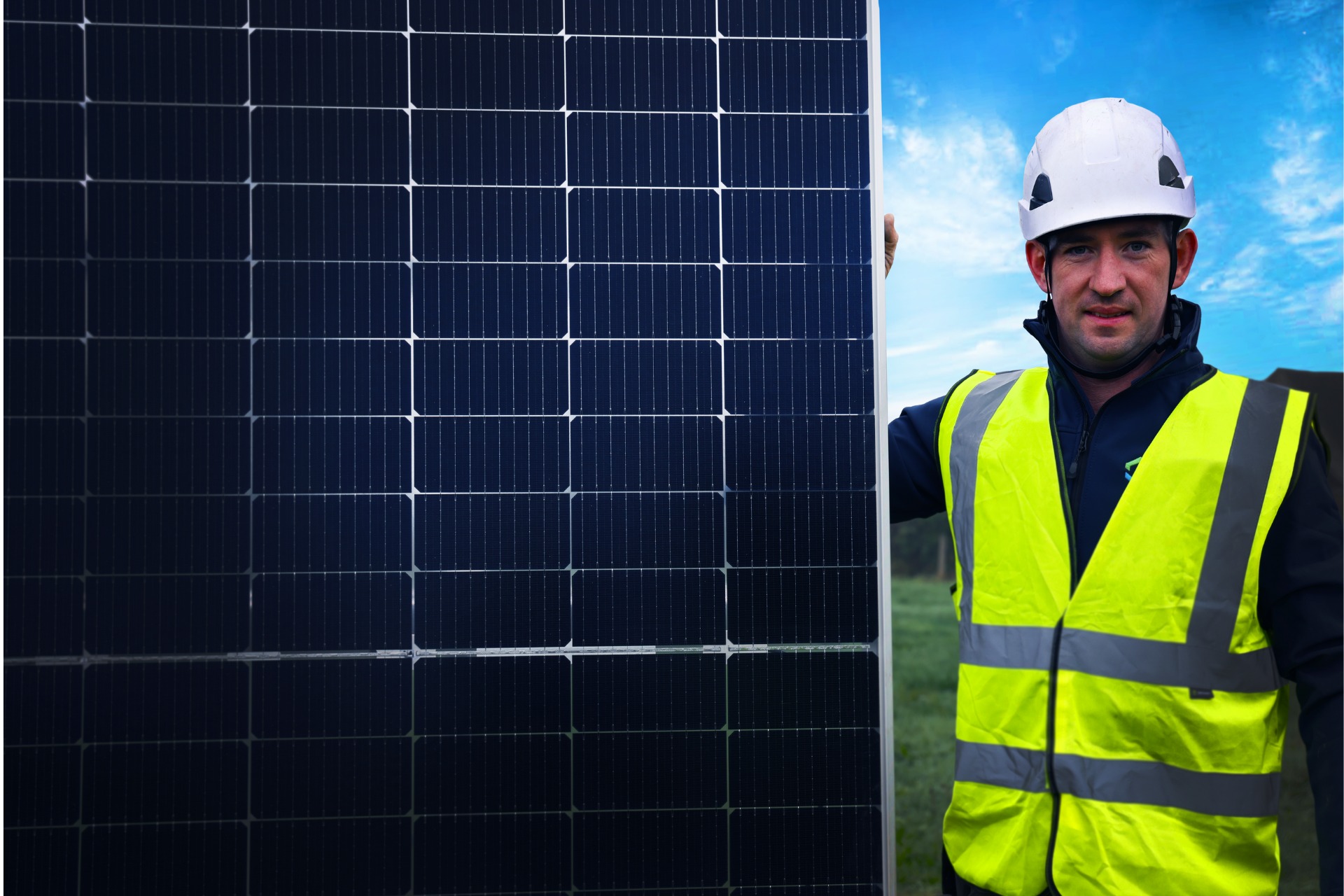
The term solar PV panels is used quite broadly to cover a variety of different systems – some heat your water like solar thermal (or solar thermodynamic) and others like solar PV (photovoltaic) panels produce electricity.
In this guide, we will be focusing on solar PV panels and PV systems in general.
From installation to maintenance, battery storage to hot water diverters, grants to payback duration, we cover everything a beginner needs to know about solar PV panel systems in Ireland.
Solar photovoltaic (also known as solar PV) converts sunlight directly into electricity using a technology known as a semiconductor cell or solar PV cell. By installing solar modules (or panels), the homeowner is able to capture some of this cost saving natural energy.
Solar PV panels are the most common solar technologies worldwide. They are also the fastest growing in terms of installed capacity.
This image provides an overview of how a solar PV panel system works.
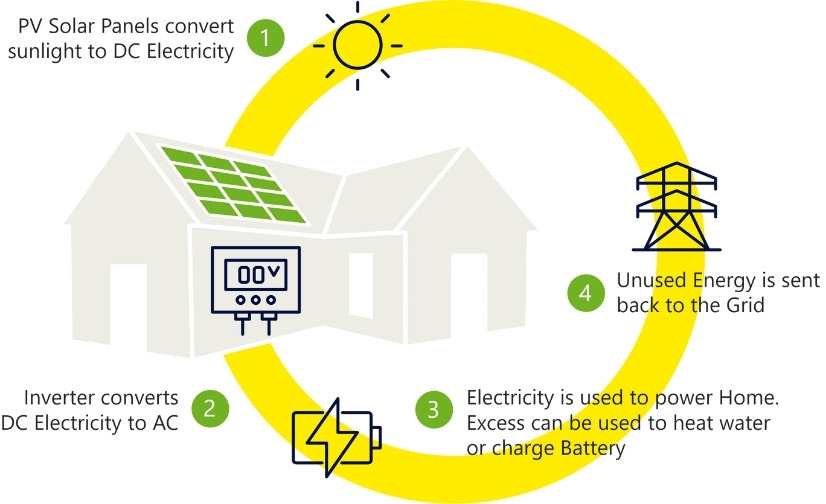
Using solar power instead of conventional forms of energy reduces the amount of carbon and other pollutants that are emitted into the environment. Reducing the amount of carbon in our atmosphere translates into less pollution and cleaner air and water. Doing this can also save 50%-80% (typically) off your electricity consumption.
Briefly, the key benefits of solar PV include:
Different components are used in different solar PV systems. And there are also differences in type of solar PV panel.
Monocrystalline and polycrystalline solar panels are two types of photovoltaic (PV) panels.
When you begin researching solar PV panels you will soon realise there are two main types of PV panels: monocrystalline solar panels (mono) and polycrystalline solar panels (poly).
Both Mono and Poly panels produce energy from the sun, but there are some differences between the two panels.
Both monocrystalline and polycrystalline solar panels do the same thing when it comes to turning light from the sun into electricity.
They are also both made from silicon, which is used for to manufacturer all solar panels, it is very durable and silicon is in large supply.
Many solar panel manufacturers produce both monocrystalline and polycrystalline panels.
Both monocrystalline and polycrystalline solar panels can be good choices for your home, but there are key differences between the two types of technology that you should understand before making your final solar purchase decision.
The main difference between the two technologies is the type of silicon solar cell they use: monocrystalline solar panels have solar cells made from a single crystal of silicon, while polycrystalline solar panels have solar cells made from many silicon fragments melted together.
Monocrystalline solar PV panels are generally thought of as a premium solar product. The main advantages of monocrystalline panels are higher efficiencies and sleeker aesthetics.
To make solar cells for monocrystalline solar panels, silicon is formed into bars and cut into wafers. These types of panels are called “monocrystalline” to indicate that the silicon used is single-crystal silicon. Because the cell is composed of a single crystal, the electrons that generate a flow of electricity have more room to move.
As a result, monocrystalline panels are typically more efficient than their polycrystalline counterparts.
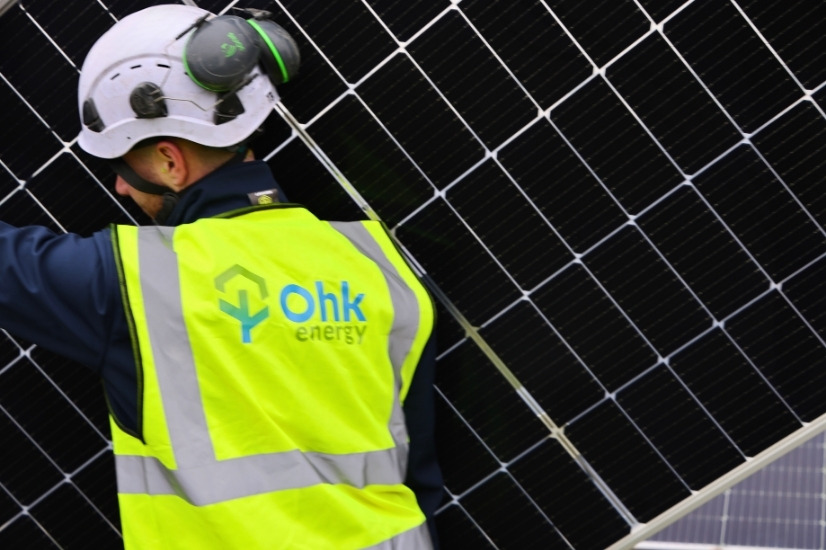
Polycrystalline solar PV panels are typically less efficient than monocrystalline options, their efficiencies have improved greatly over the last few years but are still generally not as efficient as their mono counterparts.
There are still some advantages to Poly Panels, including:
Polycrystalline solar PV panels are also made from silicon.
However, instead of using a single crystal of silicon, manufacturers melt many fragments of silicon together to form the wafers for the panel.
Polycrystalline solar panels are also referred to as “multi-crystalline,” or many-crystal silicon.
Because there are many crystals in each cell, there is less freedom for the electrons to move. The fact that there is less freedom for the electrons is why the panels are generally less efficient.
| Monocrystalline solar panels | Polycrystalline solar panels | |
| Cost | More expensive | Cheaper |
| Efficiency | Average 19% | Average 17% |
| Aesthetics | Solar cells are a black hue | Solar cells have a blue-ish hue |
| Longevity | 25+ years | 25+ years |
| Major manufacturers | Trina Sunpower LG Jinko SolarWorld |
Hanwha Kyocera Hyundai SolarWorld Trina |
Saving money is one of the best reasons to go solar, and whether you choose mono or poly solar panels, you’ll be decreasing your electricity bills.
The option you choose comes down to your personal preferences, space constraints and the financing option you choose.
Personal preferences: for the Irish climate monocrystalline panels generally perform better under low light so they would be our panel of choice. The performance and efficiency of polycrystalline panels are improving and in countries where extreme heat is the main issue then polycrystalline may be the panel of choice.
But heat is not the main problem here in Ireland.
OK, so that’s the different solar PV panels covered, now let’s take a looks at the different components that make up solar PV systems.
Solar PV systems are made up of solar PV panels and an inverter, along with required safety switches, wiring and mounting hardware.
Optional components include battery storage, EV chargers, and hot water diverter, which that help homeowners get the most out of the electricity they generate.
Let’s briefly take look at the main component of a solar PV system. We’ve already covered the PV panels so let’s start with inverters.
Solar inverters are an essential component of a solar PV system. They convert the direct current (DC) output of solar panels into alternating current (AC) electricity for use in the home.
Inverters can be monitored via a computer program or smartphone app to check energy generation, consumption and correct operation of the system.
Several types of inverter are suitable for home systems.
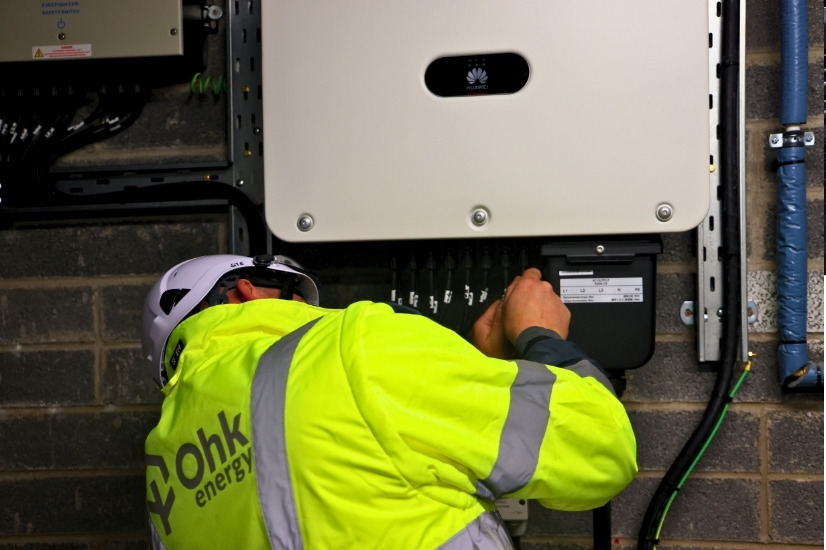
The most common type for households, generally ranging from 1.5 to 5kW. They are a single unit connected to a ‘string’ of solar panels. More than one string inverter will be required for larger panel set-ups.
The main shortcoming is if one or more of the connected panels is in shade (even partially) it reduces the output of the entire system. This means the system will always operate at the capacity of the worst performing panel.
For this reason, a fully sun-exposed panel array is ideal for a string inverter set-up.
But optimisers, more modern panels and micro inverters can overcome this issue.
String inverter warranties are generally 5 to 10 years. Some manufacturers offer extended warranties at additional cost.
These are smaller individual units that are installed on a rack or attached to each panel. They are ideal where regular intermittent shading of panels is unavoidable due to trees or other buildings.
A micro inverter system makes it possible to monitor the performance of each individual panel.
Another advantage is that reduced output from a single panel doesn’t overly affect the output from the entire array. Because there’s no single point of failure, if one inverter or panel fails the rest of the system will continue to generate electricity.
A micro inverter system is more expensive than a string inverter set-up.
Warranties for micro inverters tend to be 10 to 25 years; 10 years when they are racked and 25 years when attached to the panel directly.
Hybrid inverters allow you to add a battery to the system with relative ease. A hybrid inverter can be installed and used before batteries are in place, making it a good option for an expandable system.
Hybrid inverters rather than sending the excess electricity to a water diverter or to the grid, they can read how much is required in the home and send the excess electricity to batteries to be used at a later stage when needed.
Rechargeable solar batteries store the ‘excess’ electricity generated from a solar PV system, making power available for use at night time or when there is a higher demand in the house than the PV panels are generating.
If you have battery storage installed, you can also charge your battery from the grid if you have a night rate meter and then use it during the day when required. This is greatly beneficial during the winter months with shorter days and lower solar radiance.
Recent design improvements and price drops in lithium-ion batteries have made solar storage more viable than ever before.
Assess your energy needs before investing in a battery or batteries. There is no point buying more capacity than you can use. Also you may be in a position where you will consume most of the power directly into the home so there will not be enough constant excess electricity to feed the battery.
There are various additional considerations which will be covered in a more details battery section below.
Solar photovoltaic optimisers help with the performance certain systems if there’s partial shading, or if panels must be installed on roofs facing different orientations.
Installing optimisers help each panel to run at its optimal voltage and current, so the shading on one panel does not affect the entire array as much.
However, more modern systems can have optimisers essentially built into the solar PV system.
Hot water diverters send excess electricity to your immersion to heat the water in your hot water cylinder.
This optional extra helps make the most out of each watt generated by a solar PV system.
Continue reading to see the pros and cons of choosing a hot water diverter.
There are more considerations when it comes to solar PV systems.
Let’s take a look at these next.
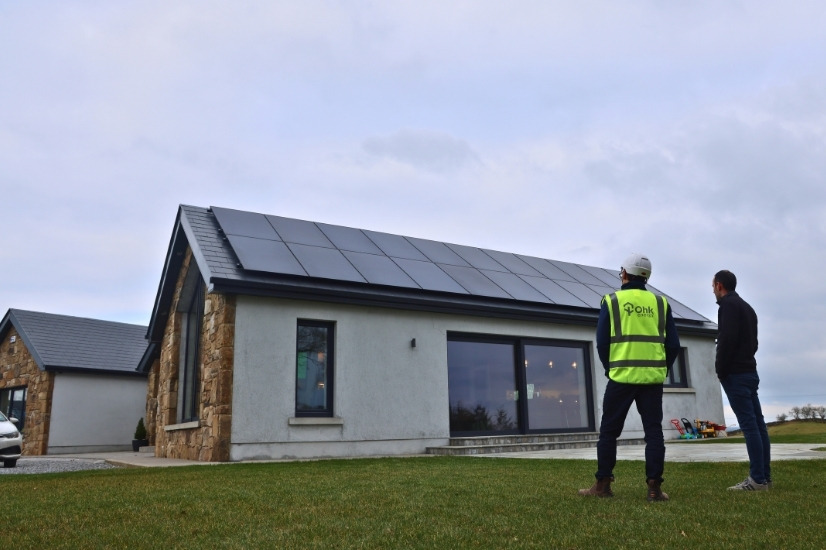
In addition to the components themselves, there are several other key factors that should be considered when it comes to solar PV systems.
These factors range from feed-in tariffs to grants, but also payback periods and making the right choices based on your goals.
You can get paid of the excess electricity you generate by sending it back to the grid, if you’re on a feed-in tariff (i.e., energy plan).
Utility companies, such as Electric Ireland, pay certain rates for this excess energy. The payment is in the form of account credit, which offsets the costs of future bills.
Feed-in tariffs differ among energy providers and are subject to change so do check with your provider. A smart meter is required to calculate how much excess electricity you have exported to the grid.
SEAI grants are available on solar PV systems. The maximum grant is currently €1,800, but the value varies by system size.
Use this Solar Grant Calculator to see the grant value that may be available to you.
Estimated grant for 0.0kWp solar system.
Certain conditions much also be met to avail of the grant (e.g., not available for new builds).
Here at Ohk energy, our in-house grant coordinators manage the entire process for customers.
A solar PV system is a considerable investment.
The market and technology are rapidly evolving. It is important to consider your habits in the household. If it is possible for you to use your heavy electrical consumption items like washing machine, dishwasher, tumble dryer, oven during the daylight hours, this will help to decide whether battery storage is essential for your home or not.
A range of components and options need to be considered.
A solar PV system powers electrical appliance’s only, so where gas/oil or a stove or fireplace with a back boiler is used for cooking or heating hot water it is worth considering replacing them with electrical alternatives.
For hot water and heating, an electric heat pump system is the most energy efficient way to run your home currently, as long your house is correctly insulated and the heat pump is set up correctly.
If your home is run by a heat pump, by having PV panels they can contribute towards your general electrical consumption as well as the electrical consumption for heating your home and your hot water cylinder.
Find out if the system can be upgraded as technology improves, you may be able to add batteries or more panels over time.
Be aware that there are low-quality solar panels around, as well as ‘deals’ that may not be what they seem.
Ohk energy is Ireland’s largest and most trusted solar PV installer – our specialists would be happy to advise on the optimal set up for you. Simply request a free, no-obligation quote below.
The typical payback period for solar PV is 5-7 years.
The electricity generated after this period is free.
Commercial solar PV can have an even shorter payback period.
If you have already received a quote or installed solar, use this Solar Panel Payback Period Calculator to estimate your payback period.
Time to recoup your solar investment.
Please note: results are intended to provide rough estimations only. Results do not include utility standing charges, selling electricity back to the grid, etc. Your actual payback period will be slightly different.
Solar PV systems typically cost between €5,000 and €20,000 to install, but Solar PV grants and changes to energy usage behaviour can be very effective at reducing initial costs and payback periods.
Related: Solar Panels Cost 2025 [Incl. Calculators & 5 Tips To Save €€€]
Solar PV panels come in a range of different wattages and power levels. Product and performance warranties also vary widely.
Numerous brands are available, with new technologies and efficiencies frequently emerging. Although solar panels look similar, levels of power, quality and reliability vary greatly.
A fully exposed rooftop with no shading is ideal for solar. Where that’s not available, make sure the panels are installed where they will attract most daylight.
PV panels can also be installed ground mounted or on sheds/ garages in close proximity to the home that are already connected to the power supply in the home.
Be aware that some manufacturers may no longer be in business in 10 or 20 years should you need to make a claim, so be insure you are going with a reputable company using reputable panels.
After extensive analysis, our specialists have chosen the best solar panels that cater to the Irish climate. They’re tier-1 bi-facial PV panels that come with a 25-year product warranty and 30-year performance warranty.
And they’re effectively self-cleaning so there’s little to no maintenance required.
Speaking of maintenance…
Modern solar PV panels require little to no maintenance.
Panel cleaning is the most common maintenance requirement.
However, if PV panels are installed in areas where no build up from dust or debris occurs then they’re essentially self-cleaning.
Rain can be sufficient to clean the glass face of the panels.
But if build up does occur (due to tress or bird droppings for example) then cleaning would be required because performance may be impacted.
Deionised water should be used when rain isn’t enough. A non-abrasive sponge may be required for stubborn build up.
More regular cleaning is usually required when panels are mounted horizontally, with a minimal tilt angle.
In addition to clean the panels, there may be other ad hoc maintenance requirements. But these may simply be tackled if system performance has dropped. Energy monitoring apps will show any drops in performance.
The installer can then rectify the issue.
Also, some installers offer a solar PV heath check service.
But overall, solar PV systems have minimal maintenance requirements by design.
Solar battery storage is a key consideration for solar PV systems.
The idea of battery storage in the home is not new. Off-grid solar PV and wind turbines generating electricity have been using battery storage for a long time especially in very remote areas.
They are used to store excess power now to be used at a later time.
It is quite possible that in 5-10 years the majority of houses with Solar PV panels will have battery storage also.
A battery captures any unused solar power generated during the day, to be used later at night, on days with low sunlight or where extra power is required to power a heavy consumer of electricity in the home.
Getting battery storage installed with PV panels is becoming more and more popular.
This is because battery storage increases energy independence and enables people to get the most out of every watt they generate.
Increasing electricity costs, energy price volatility and blackouts are less impactful when solar PV panels are combined with battery storage.
If your Solar PV system and battery capacity is large enough you could potentially offset the large majority of your consumption in your home.
Using the electricity from your battery will work out cheaper per kilowatt-hour than using electricity from the grid. Also, if you are on a night rate tariff or smart tariff you can charge your battery from the grid on the cheaper rate and use that power during the higher tariff times.
Typical Irish households opt for 5 to 8 kWh battery storage. But it really depends on the household electricity demand and system set up, including if it’s grid tied.
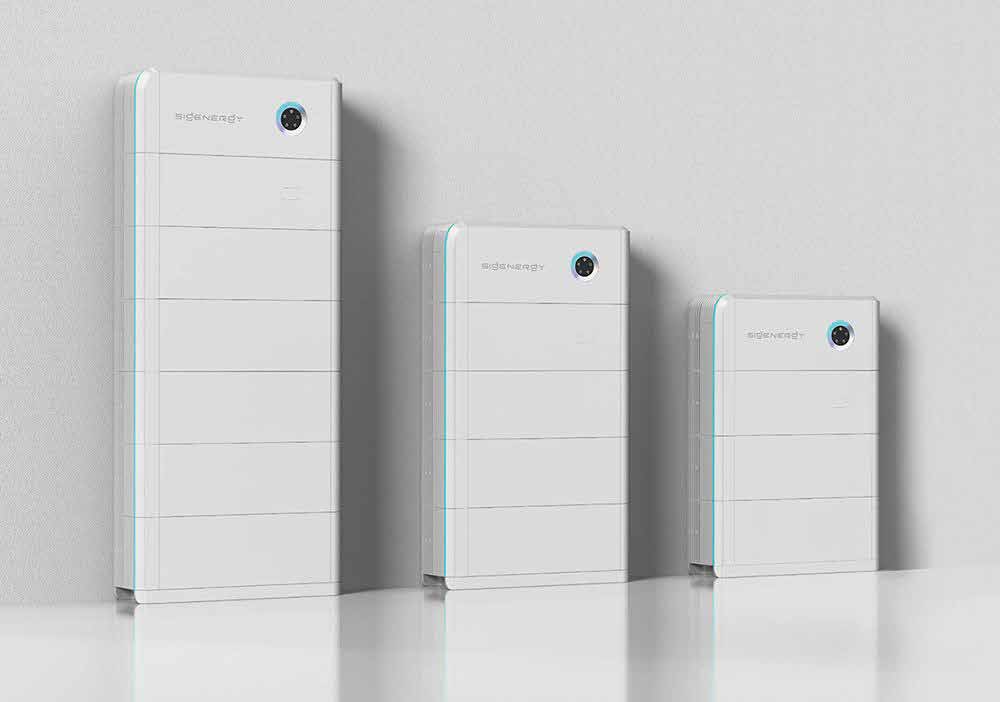
There are three main ways your home can be set up for electricity supply.
The is the most common set-up for homes with solar PV panels. The solar panels supply power during the day, and the home generally uses this power first, then if there is excess electricity it either goes to the grid through your ESB meter or else you can install an immersion diverter which will send the excess to a hot water cylinder via the immersion until your thermostat reaches max temperature and then it will export to the grid.
If demand is higher than what they solar PV system is generating then this electricity is pulled from the grid.
These have solar PV panels, a battery, a hybrid inverter, and a connection to the main electricity grid. The PV panels supply power during the day, and the home generally uses the solar power first, using any excess to charge the battery.
At times of high power usage, or at night and on low-sunlight days, the home draws power from the battery, and as a last resort from the grid.
This system has no connection to the main electricity grid. All the home’s power comes from solar panels, and possibly some other types of power generation, either generator back up or wind.
The battery is the main power source at night and on low-sunlight days. The final back-up is usually a diesel-powered generator, which may also kick in when there is a sudden high demand for power or on a dull day with no wind.
Off-grid systems are usually much more complex and expensive than grid-connected systems. They need more solar and battery capacity than a typical grid-connected system and may also need inverters capable of higher loads to cope with peak demands.
Homes that run off-grid would ideally be highly energy-efficient and the load demand needs to be well-managed throughout the day.
Off-grid solar pv systems usually only make sense for remote properties where a grid connection isn’t available or would be extremely expensive to install.
For most grid-connected systems, having a battery doesn’t necessarily protect you in the event of a blackout. You may still lose all power to your home, despite having solar PV panels producing power and a charged battery ready and waiting.
This is because grid-connected systems have what’s known as a “rapid shut down device” installed.
During a blackout, the grid and any engineers working on the lines must be protected from excess electricity generation (such as your solar panels) pumping power unexpectedly into the lines.
For most solar PV systems, the simplest way to provide anti-islanding protection is to shut down entirely. So, when it senses a grid blackout, your solar PV system shuts down and you have no household power at all.
Typically a switch over is required. Most commonly you would choose to allow only critical household circuits to operate in that situation, such as the fridge and lighting. This would require extra wiring work than a standard PV Panel installation.
But regulations may change.
Here at Ohk energy, we future proof our systems to cater to these changes.

To help understand the battery component of solar PV systems, here are some definitions of key terms you might have come across.
How much energy the battery can store, usually measured in kilowatt-hours (kWh). The nominal capacity is the total amount of energy the battery can hold. The usable capacity is how much of that can actually be used, after the depth of discharge is factored in.
Expressed as a percentage, this is the amount of energy that can be safely used without accelerating battery degradation.
Most battery types need to hold some charge at all times to avoid damage. Lithium batteries can be safely discharged to about 80–90% of their nominal capacity. Lead-acid batteries can typically by discharged to about 50–60%.
How much power (in kilowatts) the battery can deliver. The maximum/peak power is the most that the battery can deliver at any given moment, but this burst of power can usually only be sustained for short periods.
Continuous power is the amount of power delivered while the battery has enough charge.
This refers to, for every kWh of charge put in, how much the battery will actually store and put out again. There’s always some loss, but a lithium battery should usually be more than 90% efficient.
Also called the cycle life, this is how many cycles of charge and discharge the battery can perform before it’s considered to reach the end of its life. Different manufacturers might rate this in different ways. Lithium batteries can typically run for several thousand cycles.
The expected life of the battery (and its warranty) can be rated in cycles (see above) or years (which is generally an estimate based on the expected typical usage of the battery).
The lifespan should also state the expected level of capacity at the end of life. For lithium batteries this will usually be about 60–80% of the original capacity.
Batteries are sensitive to temperature and need to operate within a certain range. They can degrade or shut down in very hot or very cold environments.
These are units used to quantify the rate of energy transfer. One kilowatt = 1,000 watts. With solar panels, the rating in watts specifies the maximum power the panel can deliver at any point in time. With batteries, the power rating specifies how much power the battery can deliver.
These are a measure of energy production or consumption over time. Kilowatt-hour (kWh) is the unit you’ll see on your electricity bill because you’re billed for your electricity usage over time. A solar panel producing 300W for one hour would deliver 300Wh (or 0.3kWh) of energy. For batteries, the capacity in kWh is how much energy the battery can store.

The most common type of battery being installed in homes today, these batteries use similar technology to their smaller counterparts in smartphones and laptop computers.
There are several types of lithium-ion chemistry. A common type used in home batteries is lithium nickel-manganese-cobalt (NMC), used by Tesla, LG and Huawei.
Another common chemistry is lithium iron phosphate LiFePO, or LFP which is said to be safer than NMC due to lower risk of thermal runaway (battery damage and potential fire caused by overheating or overcharging) but has lower energy density. LFP is used in home batteries made by BPE and Sonnen, among others.
The good old lead-acid battery technology that helps start your car is also used for larger-scale storage. It’s a well-understood and effective battery type. Most manufacturers making batteries are moving away from lead acid, without significant developments in performance or reductions in price, it’s hard to see lead-acid competing long-term with lithium-ion or other technologies.
In principle, most solar battery types should be able to last 10 years or more under normal usage and if not subjected to extreme temperatures.
That is, they should be able to last as long as their warranty period at minimum, which for most models is 7-10 years. A good indicator of lifespan batteries is how many cycles they are warrantied for.
If this question were asked several years ago, the answer would definitely be no. But with the prices of batteries reducing and with advances in performance, it now makes sense to install battery storage if it suits the household’s energy demands.
Currently, a lithium-ion battery and hybrid inverter will typically cost between €8,000 and €15,000 (installed), depending on capacity and brand, with grants available up to €1,800.
Many people are investing in home battery storage now, or at least ensuring their solar PV systems are battery ready.
We recommend at least considering a battery ready inverter. This will future proof your system so even if a battery is out of reach right now, you can easily add one again down the line.
Batteries enable you to get the most out of the energy generated by a solar PV system. But so too does a hot water diverter (also referred to as a solar immersion diverter).
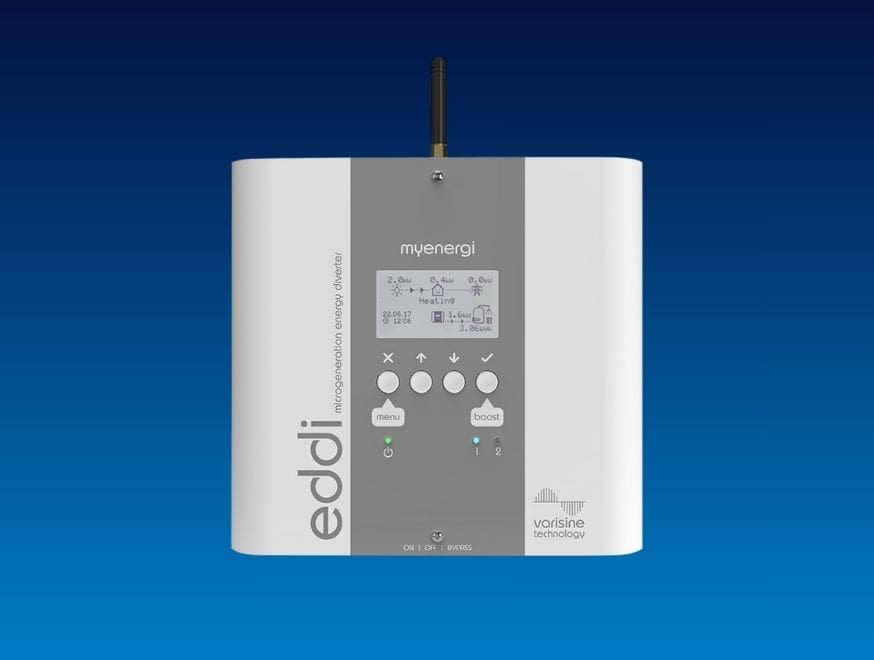
If you have invested in Solar PV for your home or are considering investing in Solar PV for your home, then you will probably be aware that there are times when your PV panels will generate more electricity the you require in your home.
This energy normally flows back to the grid via the meter.
If your home has a hot water cylinder with an immersion heater built in then a solar immersion diverter can be installed and start saving you more money on heating bills.
A solar immersion diverter system detects when excess energy is being exported to the grid and measures it. The main unit receives this information from the Sender and releases the equivalent level of energy (less a small reserve) to the immersion heater.
As the exported levels adjust in line with home consumption the immersion diverter adjusts the levels delivered for water heating ensuring that only excess energy is used.
Solar immersion diverters are an ideal option for any homeowner, who does not want battery storage or who wants to heat their hot water cylinder with excess electricity.
Immersion diverters are a highly effective way of heating your cylinder especially on days with good sunshine or on days with a lower electricity demand.
Similar to solar immersion diverters and battery storage, EV chargers can also be used to get the most out of the energy a solar PV system generates.
But not everyone has an EV to charge.
Another option is to simply export the excess energy and get paid for it…
You can get paid for any excess electricity sent back to the grid with the microgeneration scheme.
Solar PV installers will set up the system and inform the ESB that a home will send energy back to the grid. A smart meter and relevant energy plan will be required to measure and get paid (in the form of account credits) for the energy exported.
Each energy supplier varies on their rates but generally it’s around 15c-20c per unit exported.
Let’s say your home is consuming 1,000 watts and your panels are generating 2,000 watts. 1,000 watts of the solar energy will go to the house and the remaining 1,000 watts will be exported back to the grid (if no battery storage or hot water diverters are installed).
Assuming this stays constant for 1 hour, then 1,000Wh or 1kWh of energy has been exported.
If your energy provider pays 20c per unit, that means for this hour your account will be credited 20c.
These credits will then offset bills during the winter months when you solar production will be lower.
During this period it’s a lot more likely that you’ll draw energy from the grid, rather than export excess.
For example, let’s say your home consumes 3,000 watts and the solar PV panels are producing 2,000 watts.
In this case, 2,000 watts goes to the home from your panels and 1,000 watts comes from the national grid.
You are then billed as usual for the energy drawn from the grid. The account credits earned during summer months can pay this bill, partly or in full if enough energy has been exported.
Selling excess energy back to the grid helps deliver a return on the investment into solar PV systems.
Speaking of which, use this solar savings calculator to estimate how much you can save with a solar PV system.
What's your average electricity bill? Estimations are based on a unit rate of 43c.
Let's look at your energy savings Please note that this is an estimation tool only, there are many variables that will determine your actual requirements and savings. Get a free quotation below.
Environmental Impact
Related: Are Solar Panels Worth It In Ireland In 2025?
During a site survey, the ideal location for solar PV panels will be identified. Usually this is on the roof of the property.
On an agreed day, solar installers (ideally with extensive roofing experience) will set up scaffolding so they can safely work on the roof.
They remove or adjust a few roof tiles / slates to fix the mounting structure for the solar PV panels. Careful attention is paid here to prevent any damage and leakage.
The solar PV panels are then secured to the mounting structure.
Connections are made and cabling is then routed into the house where qualified electricians then take over.
The remaining work is then completed after the solar PV panels are installed.
To reduce installation times, electricians tend to work on installing the inverter, battery storage, etc., while the solar PV panels are being installed.
To get solar PV panels installed, simply complete the short form below.
You’ll get a free, no-obligations quote and site survey.
Start saving today:
"*" indicates required fields